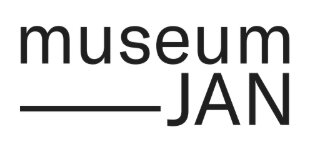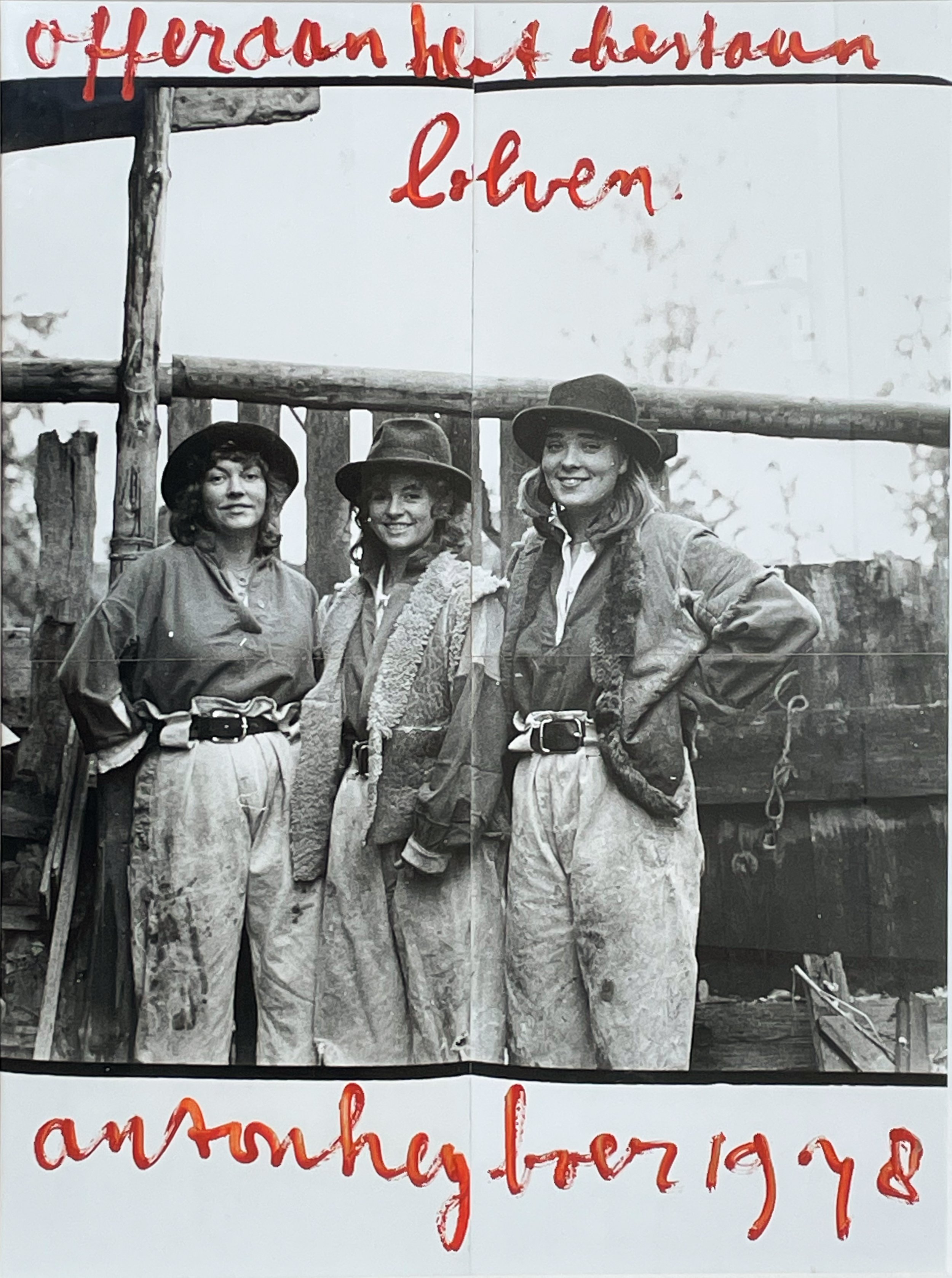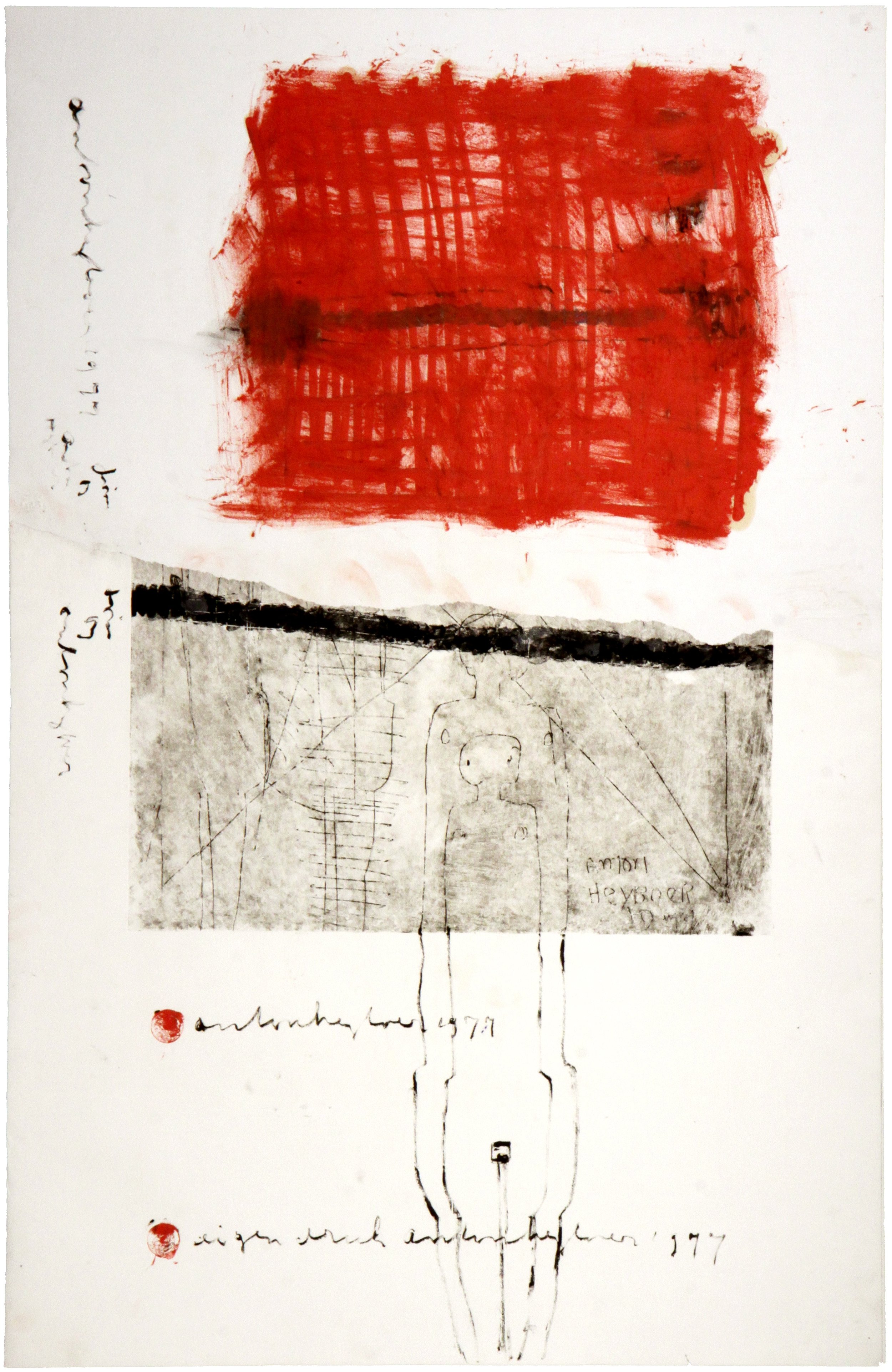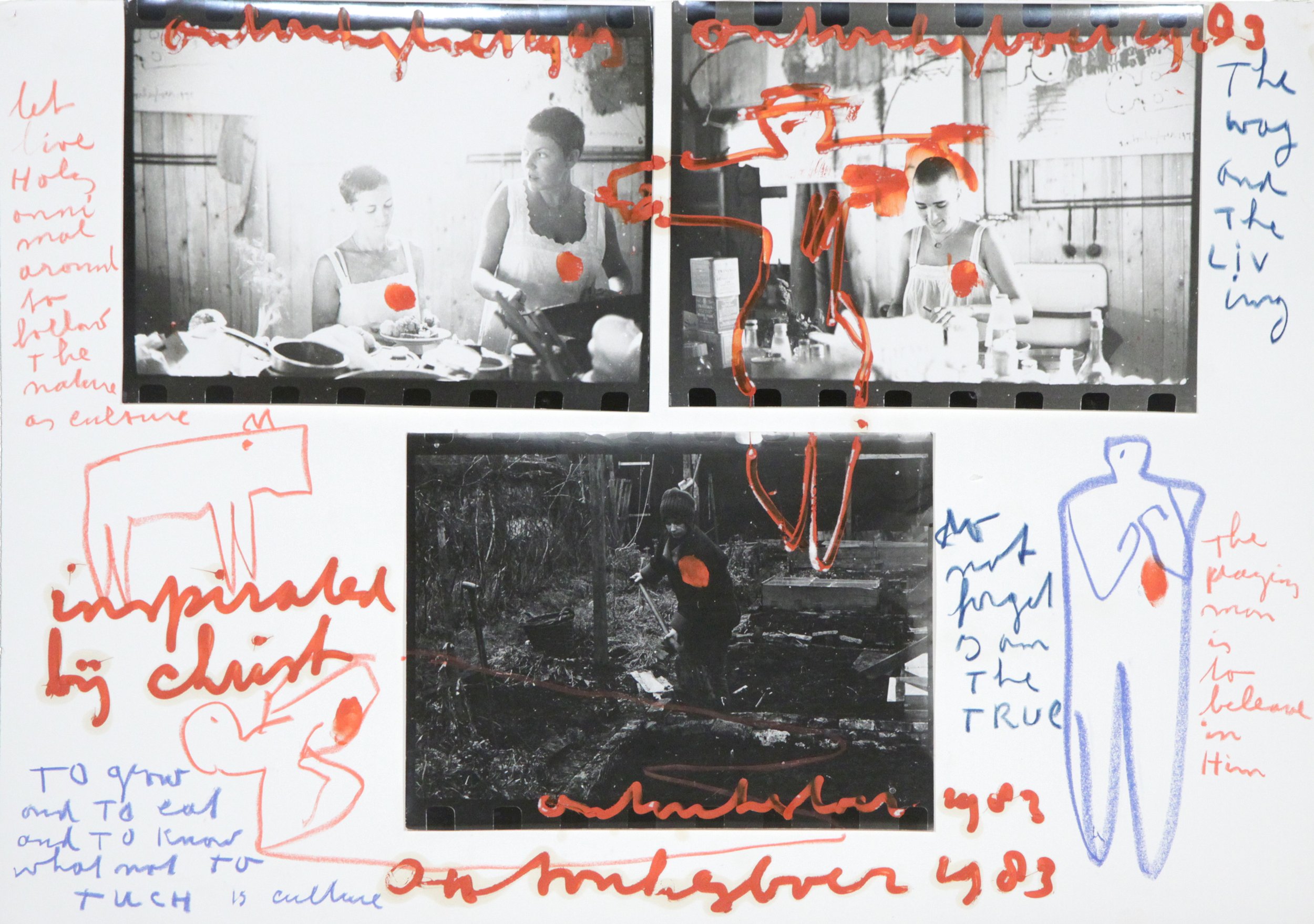Portrait Anton Heyboer, 1973, photo: Lotti Heyboer
This year marks the 100th anniversary of the birth of versatile artist Anton Heyboer (1924-2005). The graphic artist, painter and draughtsman became a living legend because of his eccentric lifestyle with five wives. To celebrate this anniversary, Museum JAN presents the exhibition Anton Heyboer, which includes never-before-seen photo collages focusing on Heyboer's life with his wives.
Anton Heyboer
Heyboer was born in 1924 in Sabang (Dutch East Indies) but grew up largely in the Netherlands. He trained as a mechanical engineer and was during World War II forced by the German occupiers to work in a transit camp in Berlin, from which he managed to escape. As a result of his war trauma, he was temporarily admitted to the psychiatric institution in Santpoort in 1951. There he discovered the healing effects of art. In the 1950s and 1960s, he produced his first successful works: large sheets of simple graphics and gouaches. Later he used matchsticks to draw and also started painting and making sculptures. From 1961, he lived in Den Ilp in the Dutch province of North Holland with his wife Maria, and later with five women he called his 'brides': Lotti, Marike, Joke and Petra. With his women, he wanted to break free from society, to free himself from 'how things should be' according to your upbringing and background.
A glimpse into his life
In Den Ilp, he built an impressive oeuvre of several tens of thousands of artworks. His brides took care of selling his work and - under Heyboer's watchful eye - photographed their lives in Den Ilp. Occasionally, he would use the camera himself. He processed these photos into collages. These offer a glimpse into their special lives. On the marshy land, they lived in windowless barns converted with scrap wood - "I look for the black to see how light things are" - and car wrecks embedded in them. The house grew organically with their lives, and was shared with dozens of dogs, cats, goats, chickens and marmots. Everything was built with materials that had lived and they all wore second-hand clothes or work clothes too. Heyboer became world-famous and his work sold well - but that fame got in the way of his freedom. He repainted his works to be free again. He did not want to own anything that might provoke envy. 'My life is art and I don't make art'. He died in Den Ilp in 2005.
Museum JAN (founded in 1991) had a special relationship with Heyboer; it organised several exhibitions in close collaboration with the artist as well as with his wives after his death (in 2004, 2008 and 2009). Heyboer donated some 18 clay sculptures to the museum, which also owns the monumental painting The Trinity.
Photo by Marije Kuiper, from left to right: Lotti Heyboer, Willem de Winter, Marieke Uildriks, Jan Verschoor, Joke Heyboer.
In the exhibition of Anton Heyboer Museum JAN honours this close relationship by telling this unique story. In collaboration with Lotti and Joke - who still live in Den Ilp - a selection was made from photo collages not previously shown, in addition to a series of etchings and plastics adapted into collages. The Leica and Hasselblad cameras - painted pink to prevent theft - from the brides' private possession are also on display at Museum JAN this summer. Also on display at the Museum House, part of Museum JAN, is work by Heyboer over the years.





